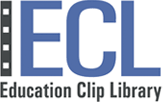The Future of Education: Trends and Technologies to Watch
Education is an ever-evolving field, constantly shaped by emerging trends and new technologies. As business users in education markets worldwide, it's important to stay ahead of the curve and understand how these trends and technologies are transforming the way students learn and educators teach. In this article, we'll explore some of the emerging trends and technologies that are shaping the future of education and provide practical recommendations for how to implement them in your educational programs. If you're looking for a cheap article writing service to help you create content on these topics, please visit our website.
Emerging Trends in Education
One of the most significant trends in education is personalized learning. This approach to education tailors the learning experience to the individual needs, strengths, and interests of each student. By leveraging data analytics and adaptive learning technologies, personalized learning is helping educators create more effective and engaging learning experiences for their students.
Another trend that is gaining popularity is collaborative learning. Collaborative learning emphasizes teamwork and cooperation among students to solve problems and complete projects. This approach helps students develop crucial skills such as communication, critical thinking, and problem-solving.
Competency-based education is another trend that is gaining traction in education. This approach to education focuses on mastery of specific skills or competencies, rather than on traditional measures such as grades and credits. Competency-based education allows students to learn at their own pace and move on to more advanced material once they have mastered a particular skill or competency.
Advancements in Educational Technologies
The use of technology in education is not new, but recent advancements have transformed the way students learn. Artificial intelligence (AI) is one technology that is becoming increasingly prevalent in education. AI-powered tools can help educators personalize learning, provide targeted feedback, and even predict student performance.
Virtual reality (VR) and augmented reality (AR) are other technologies that are transforming the way students learn. These immersive technologies allow students to explore complex concepts in a more engaging and interactive way, making learning more fun and memorable.
Adaptive learning technologies are also making a big impact on education. These technologies use data analytics and machine learning to deliver personalized learning experiences to each student, based on their unique needs and learning styles.
Impact of Emerging Trends and Technologies on the Future of Education
The emerging trends and technologies in education are changing the way educators and students approach teaching and learning. Personalized learning, collaborative learning, and competency-based education are all helping to create more engaging and effective learning experiences for students.
Technologies such as AI, VR, AR, and adaptive learning are also transforming education by providing new tools and approaches for educators. These technologies are helping educators create more personalized and effective learning experiences, while also improving outcomes and increasing student engagement.
Practical Recommendations for Business Users in Education Markets Worldwide
As a business user in education markets worldwide, it's important to stay up-to-date on emerging trends and technologies in education. Here are some practical recommendations for how to implement these innovations in your educational programs:
1. Start small: Implementing new technologies or teaching approaches can be daunting, so start small and focus on a specific area where you think the technology or approach could make a big impact.
2. Gather data: To effectively implement new technologies or teaching approaches, it's important to gather data and analyze the results. This will help you identify areas where the approach is working well and areas where it needs improvement.
3. Get buy-in from stakeholders: Implementing new technologies or teaching approaches requires buy-in from educators, administrators, and other stakeholders. Make sure you communicate the potential benefits and get everyone on board before moving forward.
4. Stay up-to-date: The field of education is constantly evolving, so it's important to stay up-to-date on emerging trends and technologies. Attend conferences, read industry publications, and network with other educators to stay ahead of the curve.
In conclusion, the future of education is bright and promising with the emergence of new trends and technologies that are transforming the way we learn and teach. Personalized learning, collaborative learning, and competency-based education are reshaping the traditional classroom experience, providing tailored learning experiences that cater to each student's unique needs and interests. Advancements in educational technologies such as AI, VR, AR, and adaptive learning are making it possible for educators to deliver more effective and engaging learning experiences.
In order to stay ahead of the curve and implement emerging trends and technologies in education, there are a number of additional resources and tools available. Here are a few suggestions:
EdTech Magazine: This online publication focuses on the latest trends and technologies in education, including personalized learning, adaptive learning, and virtual and augmented reality.
The EdTech Podcast: This podcast features interviews with educators, entrepreneurs, and investors in the education technology space. Topics covered include personalized learning, artificial intelligence, and ed-tech investment trends.



